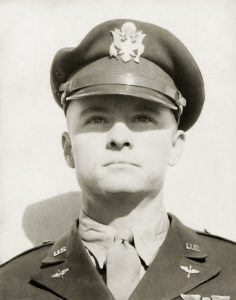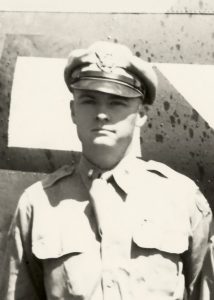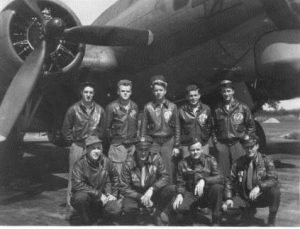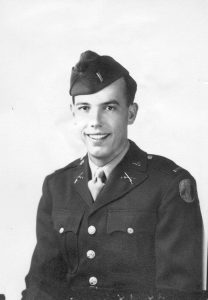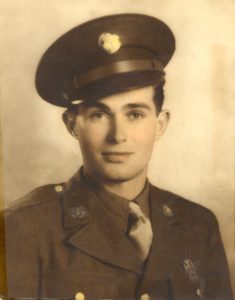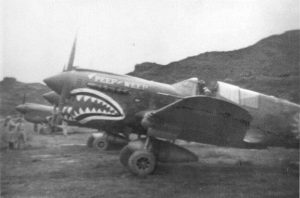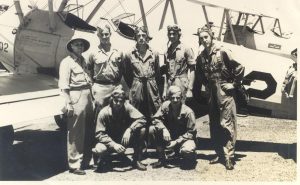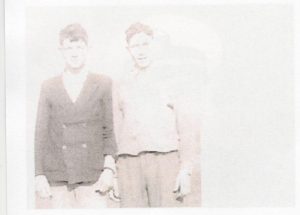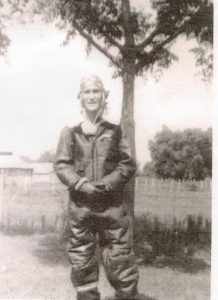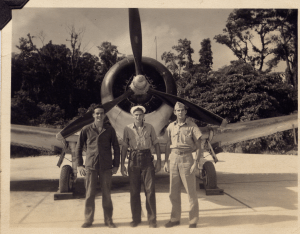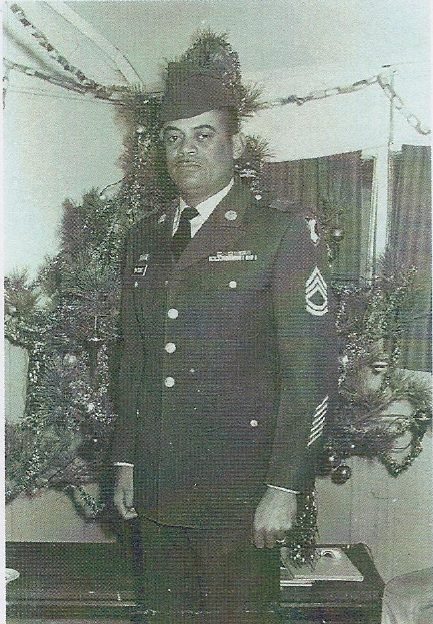WORLD WAR II VETERANS CONCORDIA PARISH LOUISIANA
U.S. ARMY AIR FORCE HOLLY HENDRIXSON
PACIFIC THEATER
48th Material Squadron, 27th Bomber Group Aviation Mechanic
Awards: Presidential Unit Citation with Oak Leaf Cluster
American Defense Medal with Bronze Star
Holly and his twin Sister, Geraldine were born in Madison, Arkansas, May 4, 1920. Their parents were Holly and Goldie Gurley Hendrixson. The family moved to Ferriday in 1926 (Just before the 1927 Floods).
Holly finished High School at Ferriday, but these were depression days. Jobs were scarce and pay was low. He joined the army in 1940 and graduated from the first aviation mechanics school, which was held in Dallas, Texas. He was stationed in the Phillipines when the war began, and was on guard duty when the first bomb hit Manila.
When Bataan and Corrigedor fell, he was on the Island of Mendora. He was one of a group of 50 volunteers who had gone there to set up a secret air base, where it was hoped they could receive support from Australia. When the Japanese landed on Mendora with 3000 to 5000 soldiers, he and his group destroyed the Air Base, fled to the mountains, and hid there for about 5 weeks. They went to the back side of the island and acquired a launch.
They set out to sea, hopefully headed for Australia, over 2000 miles away. They ran out of food and water and began looking for an island that had not been occupied by the Japanese. They found the small island of Cuyo in the Sulu Sea. The tide was high and they sailed into an inland river. They found food and water, but when the tide went out, their boat was left high and dry. A Japanese search plane spotted their boat and sent soldiers after them. Thirty three of the group were captured. In later years he learned that only 6 of the original 50 volunteers survived the war, and he was the last survivor of the 6.
Holly and the others escaped, and with small native sail boats, again headed south. They reached the Island of Panay, where Holly joined a guerrilla outfit. Later Holly, another American and one Phillippine man in a captured Japanese launch, made another try for Australia. They were captured and taken aboard another Japanese launch. Their Phillippino friend was shot and the two Americans were tied up over the front of the boat. The Japanese kept searchlights on them and fired shots all around them all night.
He spent some time in a Japenese prison, until he was freed by our Phillippino allies. (He was missing in action for 3 years so it is amazing that he was able to recall so many of the details of those years.) As he said, “I talked to the man upstairs many times during those years.”
He learned to live (survive) in the jungle and faced death by gunfire and bombs, and in many other ways. He had no medicine, no clothes and often no fresh water. He witnessed many brutalities. One time, some Phillippinos gave them a small boat. The Japenese learned about it and killed all 20 or 30 people who lived on the island. They even stayed in a leper colony for a time. A safe place, because the Japanese would not go there.
At one time, he acquired a bad attack of appendicitus, requiring immediate surgery. There was a Phillippino nurse in the area but she had absolutely no facilities. She operated with a kitchen butcher knife
on a kitchen table, with no antisetic. He had to take refuge in the mountains, so the next day, he climbed the mountain carrying a 100 pound bag of rice on his shoulder.
In 1944, Holly made one final attempt to reach Australia. He and a few others acquired a sailboat, and got as far as Borneo before they were hit by a typhoon. The storm tore the sail mast down, but the bamboo
outriggers kept the boat afloat until they reached the Island of Nigros. Natives put them in canoes and paddled to Panay. There they were rescued by the USS Angler, a new submarine that was in the area, supplying the Phillippino Guerrrillos . He was taken to Port Darwin,
Australia and later to Brisbane, which was General MacArthur’s headquarters. Even in Australia, being an escaped prisoner of war, he was not allowed to write home. They kept him in a hospital in Australia for rehabilitation for about 2 months, in an effort to rebuild him to his normal condition. Of course, they were only partly successful.
After he was returned to Washington D.C. he was allowed to write home. No news to or from home in three long years. He did not know if his family was alive or dead. No one knew if he was alive or dead. The only information, was a letter from the War Department to his mother every six months, stating that he was still missing in action. Most people gave up on him, but one person never did, his Mother, who even kept his 1941 Christmas present, unopened, in his room. His parents and his sister visited men in Winnfield and Morganza who were escaped prisoners of war. These men were encouraging, but could really tell them nothing.
When in Washington he worked at the Pentagon helping to draw maps and supply other information about the Islands, which would be useful when the island by island invasion of Japan began.
He came home for an extended leave. Then he was called back to take part in a War-Bond selling tour. This tour was in the company of movie stars and other celebrities. The toured many states, including California, where the picture was made. We are reasonably sure that this tour was the most enjoyable time of his military career.
In 1951 he married Min McNew. They had one daughter, Holly Lynn Martein who now lives in Pineville, Louisiana. Min died Jan. 20, 1998 And Holly died March 5, 2002.
Submitted by his daughter, Holly Lynn Martein
And his sister, Geraldine Wiggins
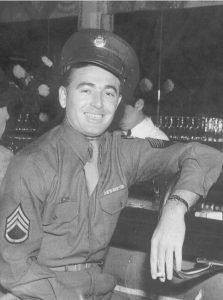
Staff Sargeant Hendrixson On a Bond Selling Tour After His Return to the United States
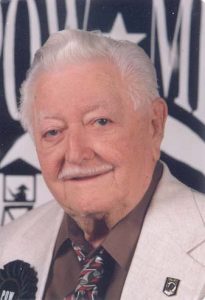
Holly in later years
